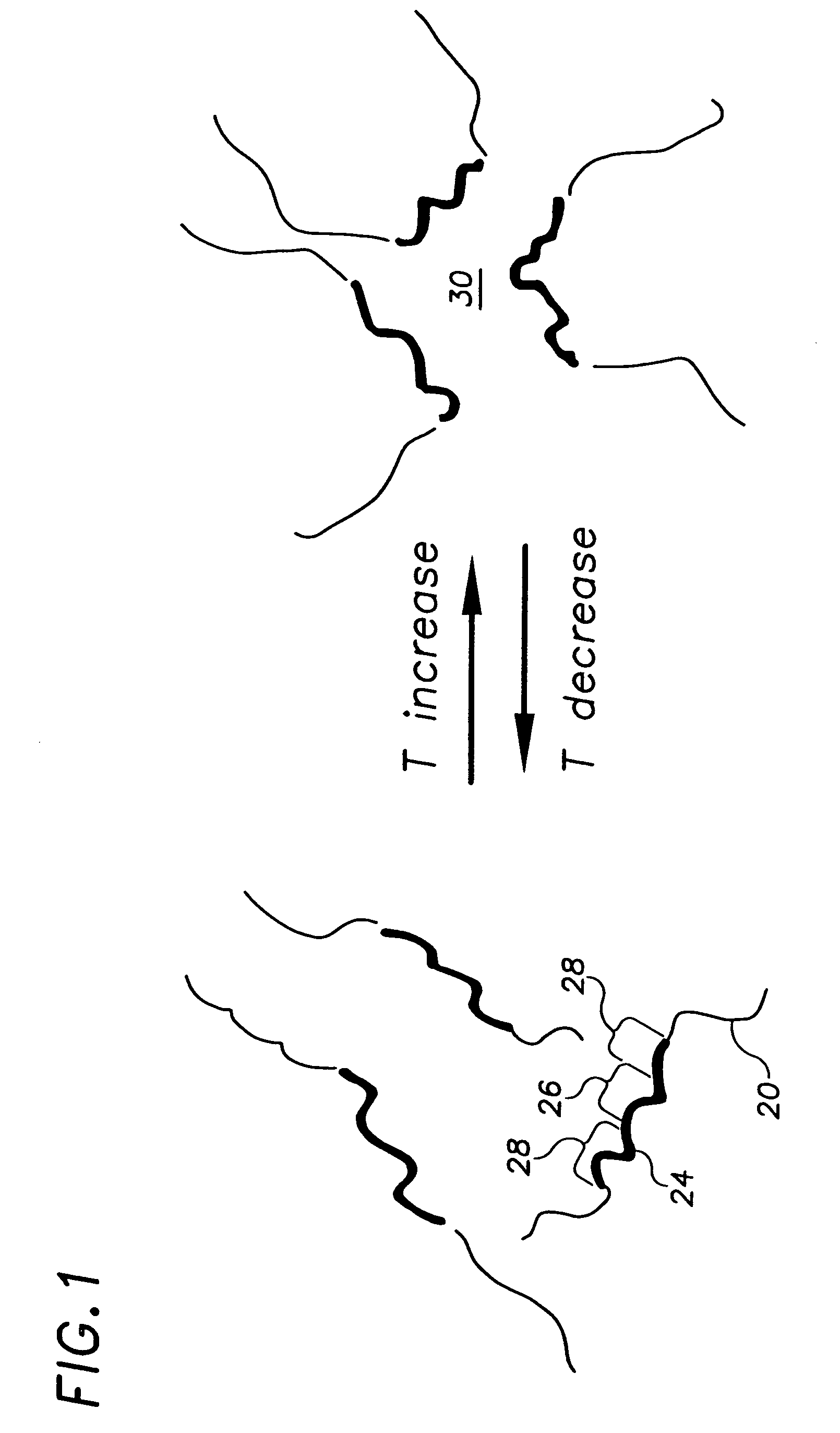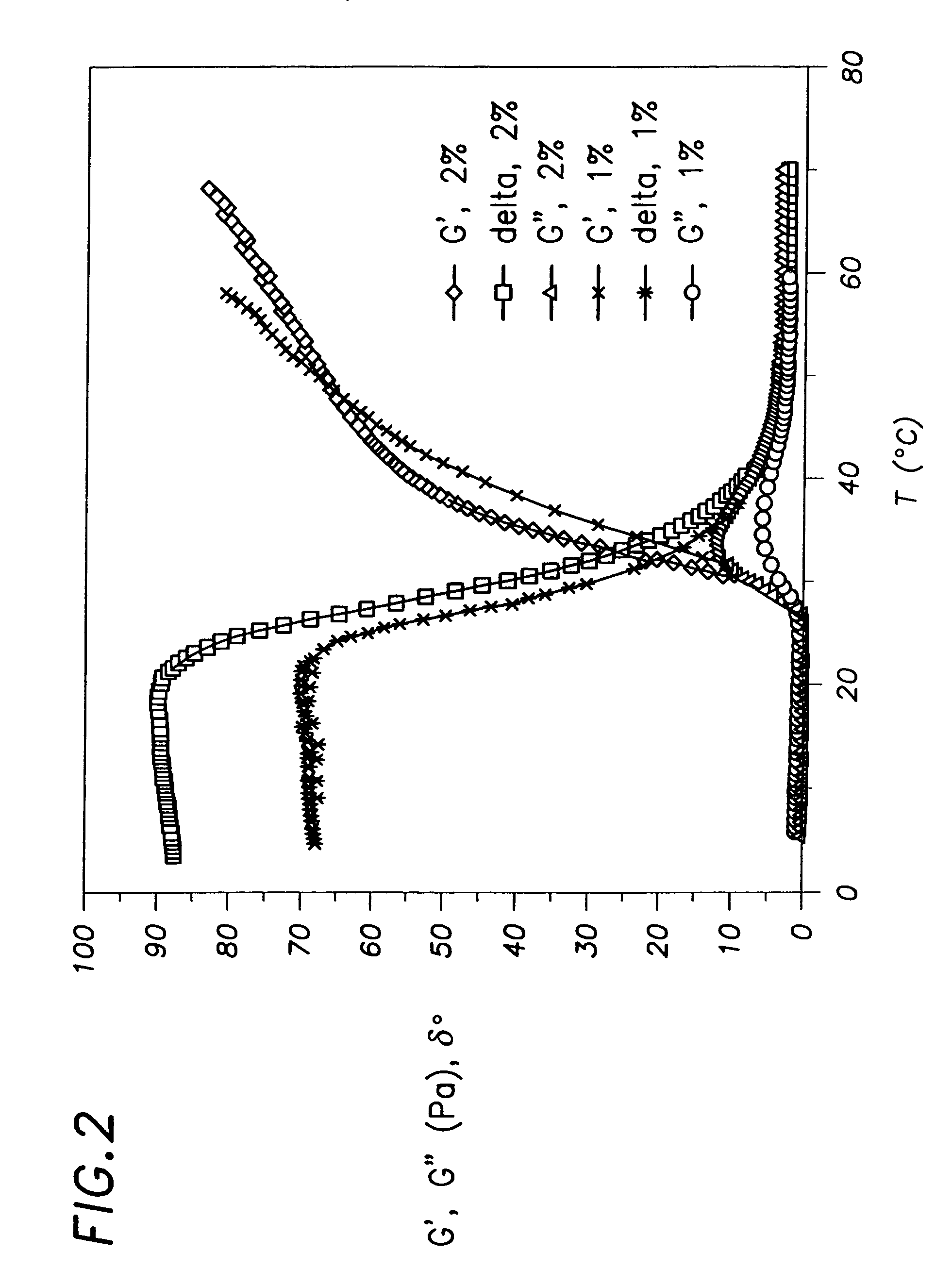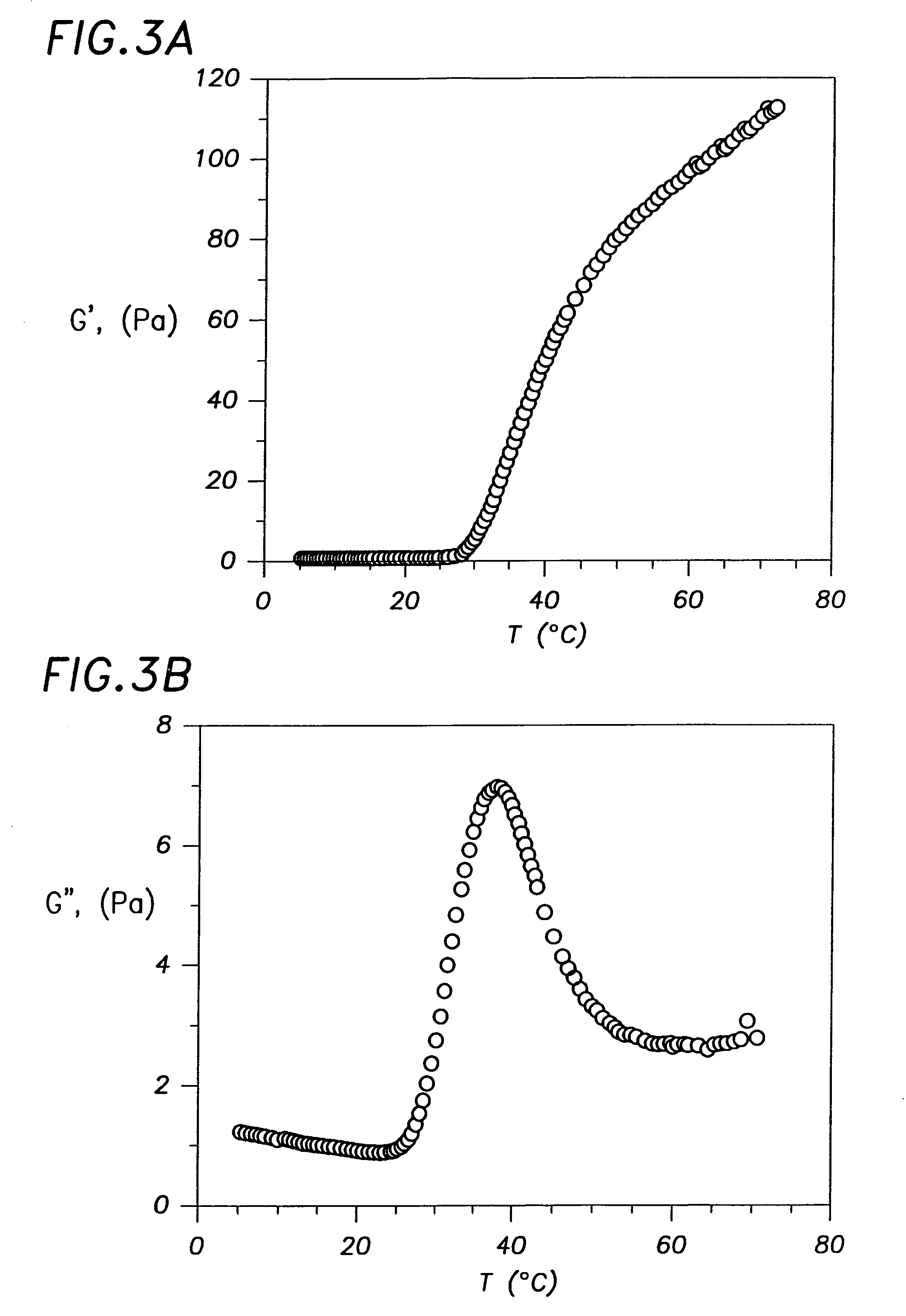End modified thermal responsive hydrogels
a technology of thermal responsive hydrogels and modified ends, applied in the direction of dispersed delivery, impression caps, synthetic polymeric active ingredients, etc., can solve the problems of undesired side effects, very limited value of direct topical application of pharmacological agents on mucosal tissues, and low bioavailability, so as to improve the flow characteristics, thickness and other properties of the composition, and enhance the overall viscosity. , the effect of enhancing the viscosity
- Summary
- Abstract
- Description
- Claims
- Application Information
AI Technical Summary
Benefits of technology
Problems solved by technology
Method used
Image
Examples
example 1
[0156]The example describes the synthesis of poloxamer:poly(acrylic acid) block copolymer.
[0157]A poloxamer was derivatized to obtain an acryloyl-terminated poloxamer according to the following equation.
HO-EO100PPO65EO100—OH═2H2CCHC(O)Cl+amine→CH2═CH—OO-EO100PPO65EO100—OOCH═CH2+HCl (1)
Pluronic F127 (EO100PPO65EO100; 30 g; BASF, Germany) was dissolved in dry toluene in a 250 mL round bottomed flask equipped with a magnetic stirrer and gas inlet-outlet to which 2.1 g triethylamine (Aldrich, 99+%) was added dropwise while stirring at 50° C. under nitrogen blanket. Then 1.2 mL of acryloyl chloride (Aldrich, 96%) was added dropwise into the flask, followed by addition of 0.75 mL triethylamine in 5 mL toluene under constant flow of nitrogen. The reaction mixture was stirred at 50° C. for 1.5 h and the contents were cooled to ambient temperature and filtered. All liquids were evaporated under vacuum and the resulting polymer flakes were redissolved in 200 mL toluene and precipitated by ad...
example 2
[0160]The example describes the synthesis of poloxamer:poly(acrylic acid) block copolymer. The acryloyl-terminated poloxamer of Example 1 was end-linked with poly(acrylic acid) as follows.
[0161]Acrylic acid (40 g) was partially neutralized by addition of 50 w / w % aqueous NaOH solution while stirring. The degree of neutralization of acrylic acid was 6 mol %. Upon redissolution of precipitate, acryloyl-terminated poloxamer was charged into a flask and allowed to completely dissolve in acrylic acid under constant agitation. A 500 mL multinecked, thermostated flanged glass reactor equipped with a mechanical stirrer, syringe sampler, thermometer, programmable heater bath, and a gas inlet / outlet was charged with 400 mL of 0.4% solution of poly(vinylpyrrolidinone-co-1-hexadecane) (International Specialty Products) in dodecane (Aldrich, 99%) and was deoxygenated overnight by nitrogen flow while stirring. A freshly prepared initiator system comprising a solution of lauryl peroxide (140 mg) a...
example 3
[0169]This example illustrates the method of synthesis of N-acryloyl-terminated poloxamer according to the following equation (3)and the formation of a poloxamer-PAA copolymer therefrom.
[0170]Amino-terminated poloxamer was synthesized as described by Chen et al. In “Temperature-Induced Gelation Pluronic-g-poly(acrylic acid) Graft Copolymers for Prolonged Drug Delivery to the Eye” in Poly(ethylene glycol) Chemistry and Biological Applications, (J. M. Harris and S. Zalipski, Eds. ASC Symp. Ser 680, 12997 pp441–457), except that Pluronic F127 NF was used and both ends of the Pluronic oligomer were functionalized. Then conjugation of acrylic acid and amino-terminated Pluronic F127 NF was accomplished by simultaneous activation and coupling with a water-soluble condensing agent, 1-ethyl-3-(3-dimethylaminopropyl)carbodiimide (EDC), as shown in eq. (3). The amino-terminated poloxamer and EDC components were dissolved at concentrations of 10 mg / mL, and 2 mg / mL in 10 mM phosphate buffer (pH...
PUM
| Property | Measurement | Unit |
|---|---|---|
| Temperature | aaaaa | aaaaa |
| Temperature | aaaaa | aaaaa |
| Temperature | aaaaa | aaaaa |
Abstract
Description
Claims
Application Information
 Login to View More
Login to View More - R&D
- Intellectual Property
- Life Sciences
- Materials
- Tech Scout
- Unparalleled Data Quality
- Higher Quality Content
- 60% Fewer Hallucinations
Browse by: Latest US Patents, China's latest patents, Technical Efficacy Thesaurus, Application Domain, Technology Topic, Popular Technical Reports.
© 2025 PatSnap. All rights reserved.Legal|Privacy policy|Modern Slavery Act Transparency Statement|Sitemap|About US| Contact US: help@patsnap.com



